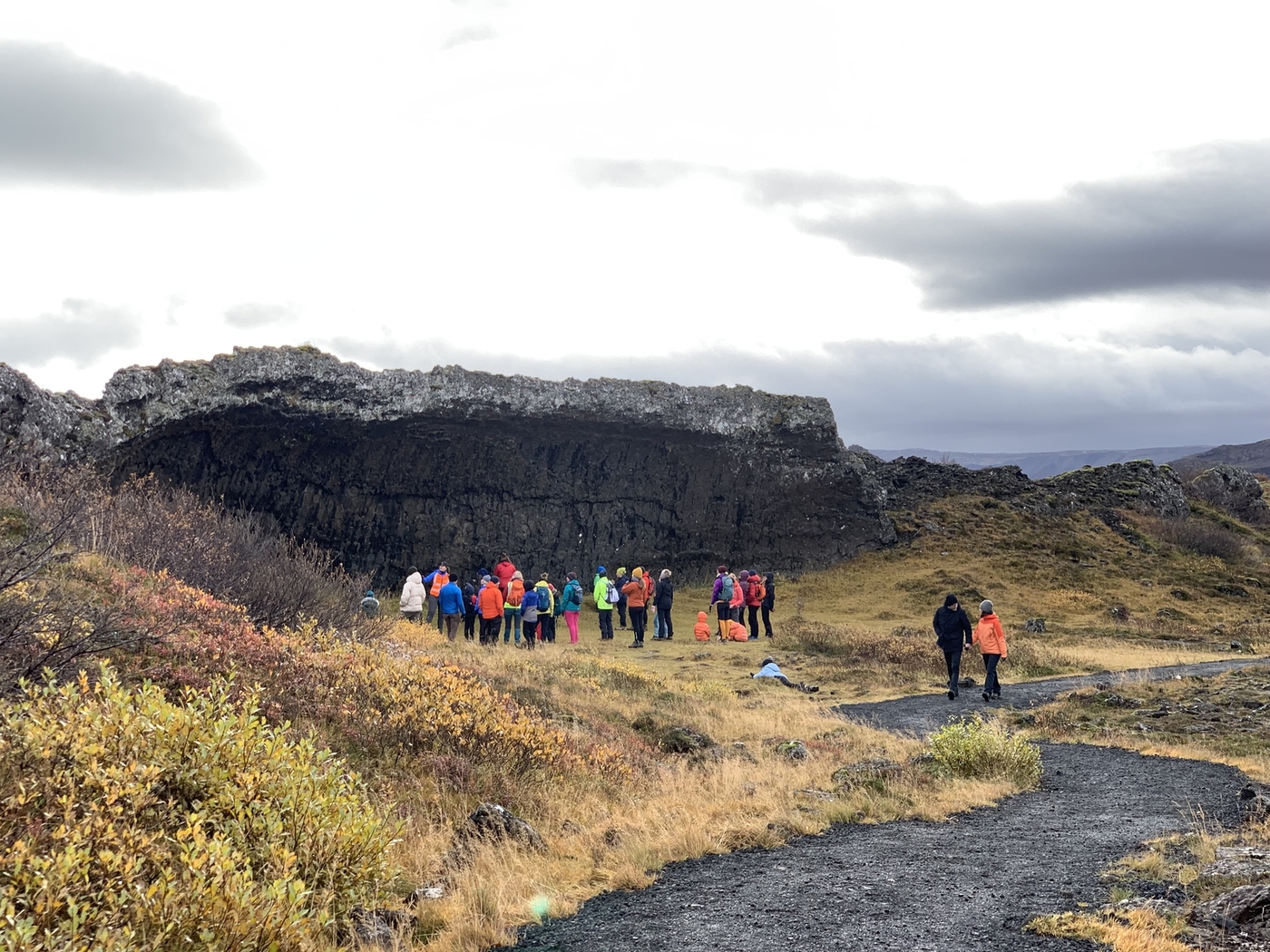If you wish to enjoy the autumn colours, learn about the volcanic formation of Iceland and enjoy a nice walk, this weekend is the perfect opportunity. On Saturday 28 September, the University of Iceland is hosting an educational hike around Búrfellsgjá in collaboration with the Children's Hiking Club, part of the Icelandic Touring Association. The walk will be full of interesting tidbits about the sights along the way.
Walking through Búrfell crater offers a true feast for the senses, especially now as the autumn colours take over the landscape.
"As you stroll through the canyon, you realize how small you are compared to the powerful forces of nature that are omnipresent," says Jón Örn Guðbjartsson, a science communicator at the University of Iceland, who will lead the walk to Búrfellsgjá, along with guides from the Children's Hiking Club.
"We will hear some stories related to the canyon, take a closer look at the autumn-dressed vegetation, and discuss volcanic eruptions. We'll also think about how nature has formed what we see," says Jón Örn.
How Did Búrfellsgjá form?
The area around Búrfell is one of the most beautiful spots for outdoor activities in the greater capital area. On a walk through Búrfellsgjá, you will see stunning plants and various lava formations, small cave shelters, large cracks, faults, and of course the volcanic crater itself; the source of all the lava.
"As you stroll through the canyon, you realize how small you are compared to the powerful forces of nature that are omnipresent," says Jón Örn Guðbjartsson, a science communicator at the University of Iceland.

Búrfellsgjá was formed by a massive volcanic eruption about eight thousand years ago in a small crater, Búrfell, which we will visit on Saturday. Geologists say that a large lava flow came from Búrfell, reaching both Vellir in Hafnarfjörður and through a great lava channel westward into Garðabær, out to Álftanes, and down to Hafnarfjörður.
The lava flow that formed Búrfellsgjá came from what scientists describe as a relatively calm eruption. The lava flowed out of the crater down to the lowlands, all the way to the sea. The main lava stream travelled through a lava channel—large paths where lava flows like a giant river from the crater down to the lowlands, where it cooled and solidified into lava fields. The lava in downtown Hafnarfjörður, Garðabær, and Gálgahraun on Álftanes all originated from Búrfell and Búrfellsgjá. The canyon itself is an excellent example of this type of lava channel.
The hike on Saturday is part of the award-winning series Hiking Trips with Science Tips; a collaboration between the University of Iceland and the Icelandic Touring Association. Jón Örn reminds everyone to dress warmly, wear sensible shoes, and bring a good snack. The event takes place on Saturday, 28 September, and starts at 12:00 PM at the Búrfellsgjá parking lot in Heiðmörk. The parking area is marked.
Participation is free of charge as always, and everyone is welcome!




